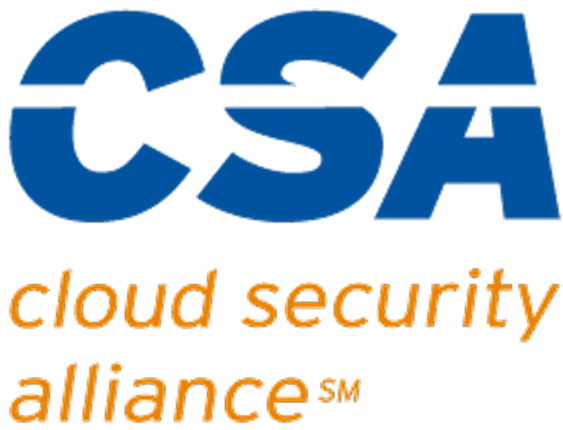Introduction
In today’s interconnected world, the shift towards remote work has become more than just a trend; it’s a transformative force reshaping the traditional employment landscape. However, as organizations adapt to dispersed teams working from various locations, a critical aspect that must not be overlooked is endpoint security. The rise of remote work has brought about unique challenges and vulnerabilities that demand a strategic approach to safeguarding endpoints effectively. Ensuring the security of these endpoints within a remote work environment is not merely an option but an essential foundation for any organization looking to thrive in this new era of flexible work arrangements.

With the boundaries of the workplace extending far beyond physical office spaces, securing endpoints holds paramount significance in safeguarding sensitive data, protecting against cyber threats, and upholding operational integrity. As the digital frontline where devices connect to networks, endpoints serve as entry points vulnerable to exploitation by unauthorized actors seeking to compromise system integrity and confidentiality. Recognizing the critical role that these endpoint devices play in enabling productivity while being exposed to unprecedented risks highlights the urgent need for comprehensive security measures explicitly tailored for remote teams. In navigating this evolving cybersecurity landscape, empowering organizations with actionable strategies becomes imperative to fortify defenses and ensure uninterrupted business operations amidst dynamic work settings.
Understanding Endpoint Security for Remote Teams
In remote work, endpoints refer to the devices employees use to access a network, such as laptops, smartphones, or tablets. These endpoints act as gateways that can be targeted by cyber threats when not adequately secured. Unlike in a traditional office environment where networks are more controlled, remote teams operate across different locations, often using personal devices and unsecured networks. This decentralization poses a significant challenge for IT professionals tasked with ensuring endpoint security.
Remote teams face unique challenges when it comes to securing their endpoints. The vulnerabilities are diverse and abundant, from unsecured Wi-Fi connections in coffee shops to the increased risk of device theft or loss during travel. Without proper safeguards, these endpoints become potential entry points for malicious actors seeking to infiltrate sensitive business data or launch ransomware attacks. The consequences of compromised endpoints can range from financial losses and reputational damage to regulatory penalties for data breaches.
The risks associated with insecure endpoints extend beyond individual devices; they threaten the very foundation of businesses relying on remote work setups. Imagine an employee’s laptop being hacked while connected to an unsecured network—the confidential client information it holds could be exposed, leading to severe legal implications and loss of trust. Ensuring that all endpoints within a remote team are secure is vital for protecting data and the integrity and continuity of business operations in an increasingly digital landscape.
Implementing Strong Access Control Measures
When it comes to securing remote team endpoints, implementing robust access control measures is a critical step in fortifying your organization against cyber threats. Access control involves regulating who can access what within your network and devices, reducing the risk of unauthorized users compromising sensitive information. One essential practice in access control for remote teams is the adoption of multi-factor authentication (MFA). MFA adds an extra layer of security by requiring users to provide multiple forms of verification before gaining access, such as a password combined with a unique code sent to their mobile device. This significantly reduces the likelihood of malicious actors gaining unauthorized entry.
In addition to MFA, enforcing strong password policies and conducting regular account audits are essential components of effective access control measures for remote teams. Strong passwords that are complex and regularly updated can deter common cyber threats like brute force attacks. Regularly auditing user accounts helps identify any anomalies or unauthorized access attempts promptly. Organizations can mitigate the risks associated with compromised credentials or internal security breaches by constantly monitoring and managing user access privileges.
For instance, a small marketing agency decided to enhance its access control practices after experiencing a security incident due to weak password policies. By implementing MFA across all devices, including laptops and smartphones used by remote employees, they were able to prevent unauthorized login attempts effectively. Additionally, by mandating regular password changes and conducting quarterly account audits, they strengthened their security posture and instilled a culture of vigilance among team members regarding endpoint security best practices.
Endpoint Protection Software: A Necessary Investment
Endpoint protection software plays a vital role in safeguarding remote team devices from cyber threats. This type of software is designed to protect endpoint devices, such as laptops and smartphones, from malicious activities like malware and ransomware. By continuously monitoring and securing these endpoints, businesses can prevent unauthorized access and potential data breaches. One key feature of endpoint protection software is real-time threat detection, which helps in identifying and mitigating security risks before they escalate.
When considering endpoint protection software options for remote teams, selecting a solution that aligns with the organization’s specific needs is essential. For example, some software packages offer centralized management capabilities, making it easier to monitor and control security measures across all devices remotely. Others provide advanced encryption features to secure data transmission between endpoints and corporate networks. Businesses can choose a solution that best fits their requirements by comparing different options based on factors like scalability, ease of deployment, and compatibility with various operating systems.
Endpoint protection software employs multiple layers of defense mechanisms to shield remote team devices from evolving cybersecurity threats. These tools utilize techniques such as heuristic scanning, behavior analysis, and sandboxing to proactively detect and block suspicious activities. In addition to defending against malware and ransomware attacks, endpoint protection software offers features like web filtering and application control to enhance overall security posture. By investing in robust endpoint protection solutions tailored for remote work environments, organizations can effectively fortify their defense mechanisms against sophisticated cyber threats.
Regular Updates and Patch Management for Remote Teams
Regularly updating devices used by remote teams is a critical aspect of maintaining strong endpoint security. Failing to patch vulnerabilities in a timely manner can expose these devices to various cyber threats, potentially leading to data breaches or system compromises. For example, not updating software can leave endpoints susceptible to malware infections that could result in significant data loss or network intrusions. By emphasizing the importance of prompt updates, remote teams can significantly enhance their cybersecurity posture.
Establishing an effective patch management strategy is critical to protecting all devices against emerging threats. One tip is to schedule automated updates during off-peak hours to minimize disruptions while swiftly addressing vulnerabilities. Moreover, organizations should prioritize high-risk patches that address critical security flaws before less urgent updates. By illustrating the risks associated with delays in patching and providing practical advice on managing updates efficiently, remote teams can better safeguard their digital assets from potential cyber incidents.
An insightful approach could involve sharing real-world examples of companies that suffered security breaches due to outdated systems or unpatched software. These stories serve as cautionary tales, underscoring the importance of proactive patch management in preventing similar incidents. Additionally, demonstrating how updated systems can thwart common cyberattacks like ransomware can further drive home the significance of keeping remote team devices current with the latest patches. Instilling a culture of regular updates within remote teams is vital for mitigating security risks and ensuring comprehensive endpoint protection in today’s dynamic threat landscape.
Educating Remote Team Members on Security Best Practices
Cybersecurity awareness training is a fundamental component of ensuring remote team endpoint security. Educating remote employees about potential threats, such as phishing emails and social engineering tactics, can significantly reduce the risks of cyberattacks. Team members become the first line of defense against potential breaches by adopting a culture of vigilance and caution. For example, conducting simulated phishing exercises can help employees recognize suspicious emails and avoid falling victim to scams. This proactive approach empowers team members to actively contribute to maintaining a secure work environment.
To enhance security measures further, it is vital to outline essential best practices that all remote team members should adhere to. Simple actions like locking devices when not in use, avoiding public Wi-Fi for sensitive tasks, and using encrypted communication channels can go a long way in fortifying endpoint security. Emphasizing password hygiene by promoting the use of strong, unique passwords and encouraging regular password changes can also bolster defenses against unauthorized access. Providing real-world examples of data breaches resulting from weak security practices can underscore the importance of following these guidelines.
Creating a culture of security within a remote team environment involves fostering open communication channels where cybersecurity concerns are addressed promptly and transparently. Regularly updating team members on emerging threats and sharing security tips can keep everyone informed and vigilant. Encouraging an environment where colleagues look out for each other by reporting suspicious activities or potential vulnerabilities promotes a collective responsibility for cybersecurity. By fostering a sense of shared commitment to protecting sensitive data and upholding best practices, organizations can establish a resilient security posture within their distributed workforce.
Monitoring and Incident Response Plan
In the realm of remote team endpoint security, continuous monitoring serves as a crucial shield against evolving cyber threats. By keeping a vigilant eye on network activities and endpoint behaviors, organizations can swiftly detect any anomalies or suspicious patterns that might indicate a potential security breach. This real-time monitoring bolsters defenses and allows immediate response actions to be initiated, mitigating risks before they escalate. For instance, sophisticated tools can monitor user logins across various devices in dispersed locations, enabling IT teams to spot unauthorized access attempts promptly.
Crafting an effective incident response plan tailored specifically for addressing endpoint security incidents in remote work environments is paramount. The plan should outline clear steps to take in case of a security breach, designate responsible personnel for each action point, and establish communication protocols to ensure swift coordination during crises. For illustration, a well-devised incident response plan might include:
- Predefined procedures for isolating compromised endpoints from the network.
- Collecting forensic evidence remotely.
- Communicating transparently with remote team members about the incident and subsequent remediation efforts.
Regular testing of incident response procedures is not just advisable; it’s essential in fortifying an organization’s resilience to cyber threats in remote work scenarios. Conducting simulated cybersecurity drills simulates real-world scenarios and helps teams identify gaps or inefficiencies in their response strategies. By regularly stress-testing the incident response plan through tabletop exercises or red team simulations, companies can refine their processes proactively, rather than reactively when facing an actual security incident. Often, these tests reveal opportunities for improvement that may go unnoticed until under the pressure of a live security breach situation.
Ensuring Secure Communication Channels
Regarding remote team communication, ensuring data exchange security is paramount in maintaining confidentiality and integrity. Utilizing secure communication tools can significantly enhance data protection for distributed teams. Encrypted messaging services like Signal or Wickr offer end-to-end encryption, meaning only the sender and recipient can access the messages. This level of protection ensures that sensitive information shared during communications remains secure against unauthorized access.
Encryption protocols play a vital role in safeguarding sensitive data transmitted over communication channels within remote teams. Implementing protocols such as Transport Layer Security (TLS) or Secure Sockets Layer (SSL) can create a secure connection between devices and servers, preventing potential eavesdropping or data interception by cyber criminals. By emphasizing the use of encryption protocols, businesses can bolster their defenses and mitigate the risk of sensitive information falling into the wrong hands.
Selecting the right secure messaging platforms and virtual meeting solutions is crucial for maintaining high security within remote team communications. Platforms like Microsoft Teams or Zoom offer end-to-end encryption for video calls and messaging, ensuring that discussions remain confidential. When choosing these tools, businesses should prioritize features like multi-factor authentication to add an extra layer of security beyond passwords. By following these recommendations and adopting secure communication practices, organizations can establish a safe digital environment where remote teams can collaborate without compromising sensitive data.
Compliance Requirements and Data Privacy Regulations
One crucial aspect of ensuring remote team endpoint security is understanding and adhering to compliance requirements and data privacy regulations. Regulations such as the General Data Protection Regulation (GDPR) or the Health Insurance Portability and Accountability Act (HIPAA) are particularly relevant when it comes to securing endpoints for remote teams. These regulations set specific standards for handling data, including personal or sensitive information, which must be followed to avoid regulatory fines or legal consequences.
By complying with these data privacy laws, organizations can enhance the effectiveness of their cybersecurity measures within distributed workforces. Adhering to these regulations helps protect sensitive data and demonstrates a commitment to maintaining high security standards for all stakeholders involved. Organizations that prioritize compliance show a dedication to safeguarding their employees’ and clients’ information, building trust and credibility in an increasingly digital world where data breaches are a significant threat.
In addition to data protection benefits, complying with these regulations can help companies overcome incident response and breach notification challenges. Understanding the requirements imposed by GDPR, HIPAA, or other relevant standards enables organizations to establish clear protocols for managing incidents involving sensitive information. This proactive approach can streamline response efforts, minimize potential damages from breaches, and foster a culture of accountability within remote workplaces where secure handling of data is paramount. By aligning with compliance requirements and privacy regulations, companies bolster their overall cybersecurity posture while reinforcing the importance of data protection in today’s interconnected business landscape.
Conclusion
By following the steps outlined in this guide, you can establish a solid protective shield around your remote team’s devices. Remember to prioritize access controls, such as multi-factor authentication and stringent password policies, to bolster security defenses. Educating your team members on security best practices and fostering a culture of vigilance against cyber threats are crucial aspects that should not be overlooked.
Furthermore, investing in reliable endpoint protection software is imperative to safeguarding remote devices against malware, ransomware, and other digital intrusions. Regular updates and proactive patch management strategies must be incorporated into your security protocols to prevent vulnerabilities from being exploited. Ensuring secure communication channels using encrypted platforms will enhance data protection during virtual interactions. Adhering to compliance requirements and data privacy regulations adds another layer of security efficacy within distributed workforces.
To summarize, by combining access control measures, endpoint protection software, regular updates, employee awareness training, monitoring protocols, incident response plans tailored for remote settings, and secure communication practices, you can effectively fortify your remote team’s endpoints against evolving cyberseteam’s threats. The value of implementing these comprehensive security measures cannot be overstated in today’s digital landscape, where the protection of information is paramount to maintaining business continuity and trust within distributed work environments.




